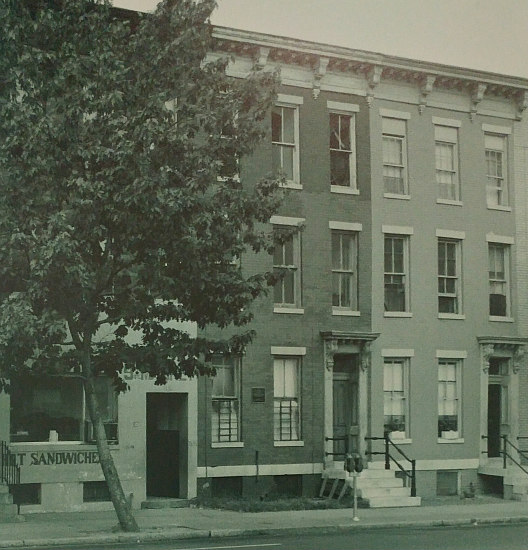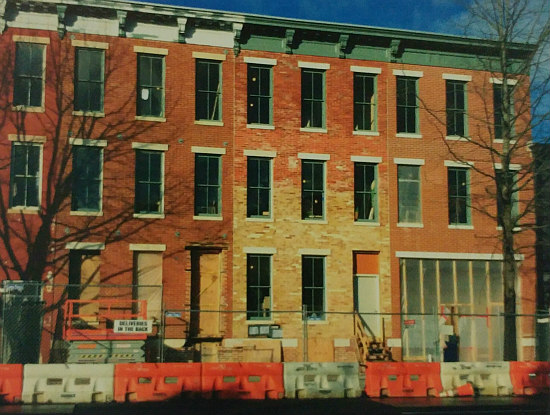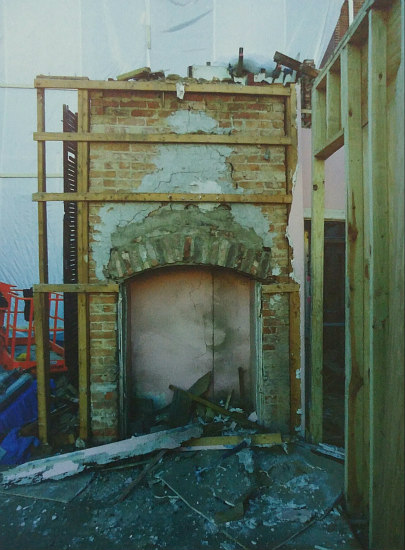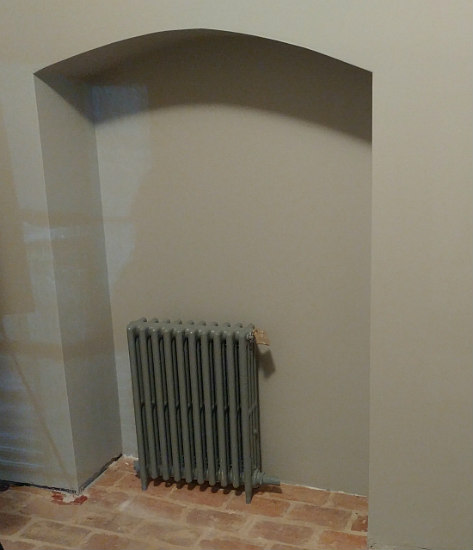What's Hot: Nearly $1 Million An Acre: Pricey Land Sale Near Dan Snyder's Alexandria Home Closes Out 2025
 A Historic Restoration for a Piece of Black History on 9th Street
A Historic Restoration for a Piece of Black History on 9th Street
✉️ Want to forward this article? Click here.

The Woodson house circa 1970
In honor of Black History Month, the National Park Service (NPS) paid homage to Dr. Carter G. Woodson, known as the father of Black history, with a preview on Sunday of the Carter G. Woodson Home National Historic Site, a Shaw rowhouse that is undergoing extensive reconstruction and restoration.

The Woodson house (at left) earlier this year
The 3,380 square-foot rowhouse at 1538 9th Street NW (map) was originally built in the 1870s and is being restored to its period of historical significance during Woodson’s residence from 1922-1950; he passed away in the house on April 3, 1950.
During the nearly three decades that he resided at the home, the Virginia native founded Negro History Week, which later was expanded into Black History Month. The week was part of his larger efforts to research and create a body of knowledge for Black history, which included founding Associated Publishers and writing or co-authoring over 20 books, most famously The Miseducation of the Negro.

Schematic of the plans for the three properties
The restoration and opening of the house to the public is through a partnership with the Association for the Study of African-American Life and History (ASALH), an organization Woodson founded in 1915 under a different name. NPS purchased the house from ASALH in 2005 and had to overcome several obstacles before beginning the initial restoration phase, including a lack of federal funding and resistance from the owners of the adjoining properties. Now, NPS owns the houses at 1540 and 1542 9th Street, and Shiloh Baptist Church, which was Woodson’s place of worship, owns the properties on the other side of the house.
Decades of neglect came to a head in 2011, when the DC earthquake led to the rear wall collapsing. Subsequently, a rear room had to be entirely rebuilt. Woodson had walled off a brick fireplace in this room to install a radiator; upon restoration, the fireplace was also dismantled and reconstructed prior to being walled over again.

Rear fireplace during reconstruction

Rear fireplace after reconstruction

Rear fireplace after being walled off
The deconstruction and reconstruction process can be seen in several other portions of the house as well. Each individual brick of the facade was removed, numbered and catalogued, restored and shaved down in order to return each to its place and even out the front of the house.
Moldings, decorative elements, and the staircase were removed from the house, restored and returned. Medallions on the facade of the house conceal rods that were inserted to bolster the structure.

A schematic of the stair restoration

Stair during reconstruction

The stairs today
The original doorframes and functioning transoms were also preserved, and much of the hardwood flooring in the house is original and was cleaned and oiled by Woodson’s own hands. NPS excavated an additional three feet down in the basement, where Woodson used to keep the bulk of his library, in order to create administrative space.
While the facades are attached along the streetfront, the rear of the rowhouses do not align, so the Woodson house has a large sideyard and side windows where the church properties adjoin.

The rear of the three properties after rear wall reconstructed

The rear of the three properties more recently
Woodson lived on the third floor of the house, while the second floor contained his office and kitchen. Because there are very few pictures of the interior of the Woodson house, the Site will be less of a traditional home replica with guided tours and more of an interactive experience. This past weekend’s tours previewed both reenacted vignettes and audio of Woodson giving interviews.

Woodson’s second floor office, today
At this point, the vacant and now-structurally sound house represents the completion of Phase I. Over the next few months during Phase II, all HVAC systems will be installed and the houses at 1540 and 1542 will be rehabilitated to ensure their structural integrity, while creating additional space for programming, administrative offices and a visitors’ center and also enabling them to install an elevator for accessibility.
NPS will conduct scheduled tours for the public April 21-23 during National Park Week; the Site is anticipated to officially open for tours during the weekends Memorial Day-Labor Day.
See other articles related to: historic, historic preservation, national park service, shaw
This article originally published at http://dc.urbanturf.production.logicbrush.com/articles/blog/historic_preservation_for_a_piece_of_black_history/12267.
Most Popular... This Week • Last 30 Days • Ever

Today, UrbanTurf offers a brief explanation of what it means to lock in an interest r... read »

The 30,000 square-foot home along the Potomac River sold at auction on Thursday night... read »

An application extending approval of Friendship Center, a 310-unit development along ... read »

A key approval could be coming for a proposal to convert a Georgetown office building... read »

Capital Bikeshare breaks a record; Trump potentially legalizes weed sales in DC; and ... read »
DC Real Estate Guides
Short guides to navigating the DC-area real estate market
We've collected all our helpful guides for buying, selling and renting in and around Washington, DC in one place. Start browsing below!
First-Timer Primers
Intro guides for first-time home buyers
Unique Spaces
Awesome and unusual real estate from across the DC Metro













